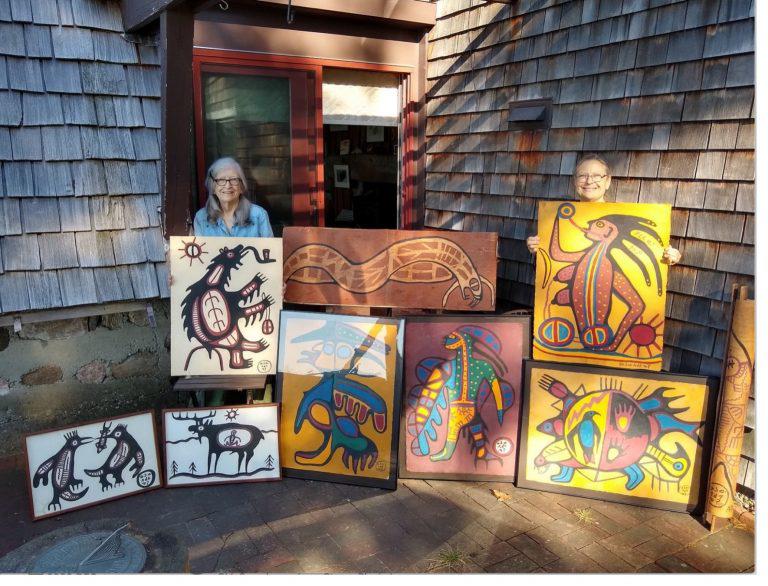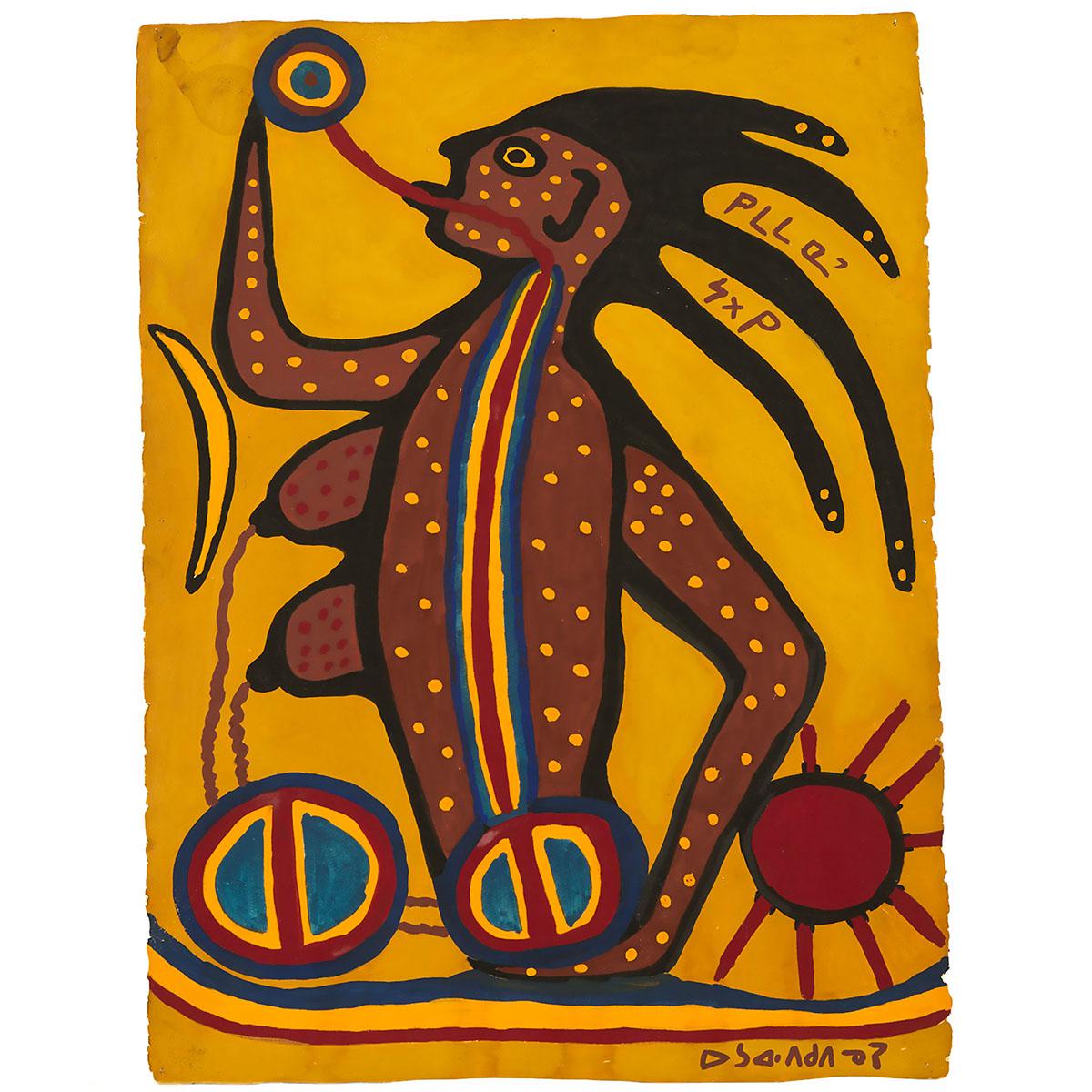Meeting Norval Morrisseau: A Collector’s Story
June 2, 2021 By: Dara Vandor
Picture this: you’re on a family vacation, and stumble upon the work of a local artist. You’ve never heard of them before, but like the work so much that you decide to buy nine paintings.


Unbeknownst to you, you’ve just bought work by one of the most instantly recognizable Canadian artists of the 20thcentury—right before their career takes off.
This is what happened to Jean Tandy in July 1962. Tandy, then an MFA student at Michigan State University, was travelling around the newly established Blacksand Provincial Park (renamed in 1978 as Lake Nipigon Provincial Park) in Ontario with her young family when she came across works by Norval Morrisseau (also known as Copper Thunderbird). Intrigued, she piled her children into the family’s VW Van and took them to visit his cabin.
At the time, Morrisseau was living in Beardsmore, Ontario, with his wife Harriet Kakegamic. Morrisseau had been drawing since he was very young, but had only taken up painting in the late 1950s. Unable to make a living as an artist, he had found work in a gold mine and took on odd jobs. His art had begun to attract a small group of supporters, but had not yet been shown commercially. At the time, Morrisseau was becoming more confident in his role as an artist, and began setting his sights on bringing Indigenous art and culture into the mainstream Canadian discourse.
A friend of Morrisseau’s brought his work to the attention of Toronto gallery owner Jack Pollock, who was in the region teaching a workshop. Pollock, after visiting the artist’s home, wrote that “Morrisseau was an artist with vision…and I decided then and there that I would show them [the paintings] in Toronto.” The Pollock Gallery organized Morrisseau’s debut for September 1962, the first time an Indigenous artist had exhibited work in a contemporary art gallery in Canada. Upon opening, the show was hailed as a revelation, and the paintings sold out immediately. Overnight, Morrisseau became a celebrity, and his personal artistic style and vocabulary would launch an entire school of painting. Indeed, the influence of the Woodland School that he founded is still felt today.

Tandy met Morrisseau only months before this seminal exhibition. After arriving at his cabin in Beardsmore, she was invited in to browse all of the works that he had accumulated in his early career, works that might have been waiting to be chosen by Pollock for inclusion in his show. After a long conversation with Morrisseau, Tandy chose nine paintings. Upon return to her home in the United States, she hung them in her children’s bedrooms, around the house, and in her husband’s office. One of her children writes that the paintings “changed our family,” who came to view them as “living spirits who came to be embodied as a painting through the life force of Copper Thunderbird.”
Tandy remained in the arts for her entire career. A potter and painter, she also helped to found the Art Department at Mount Wachusett Community College, in Massachusetts. There she taught and served as Chair of the Art Department for 30 years. On the occasion of her retirement, a tribute to Tandy explained that “to her, art is a language whose vocabulary of shapes and colours carries a core of felt experience which communicates itself directly without artifice and is understandable on different levels simultaneously,” a description which could also be applied to the work of the master artist she loved so much—Norval Morrisseau.
After 58 years in Tandy’s collection, these works have returned to their country of origin. We invite you to view eight of these early paintings by Morrisseau, lots 1-8 in the Indigenous Art auction, as well as browse the full catalogue.


